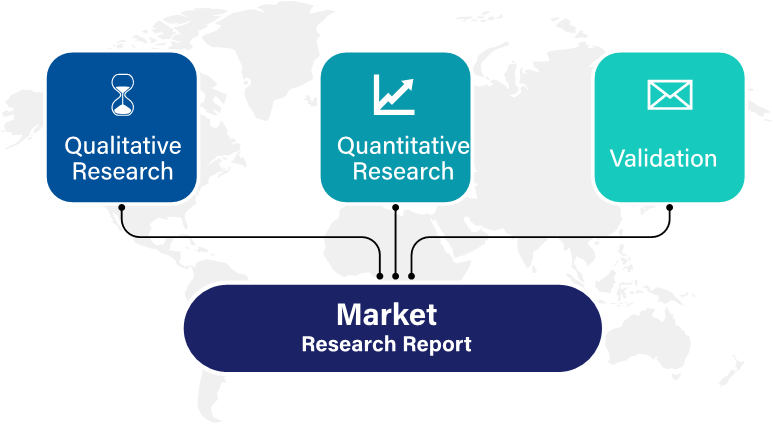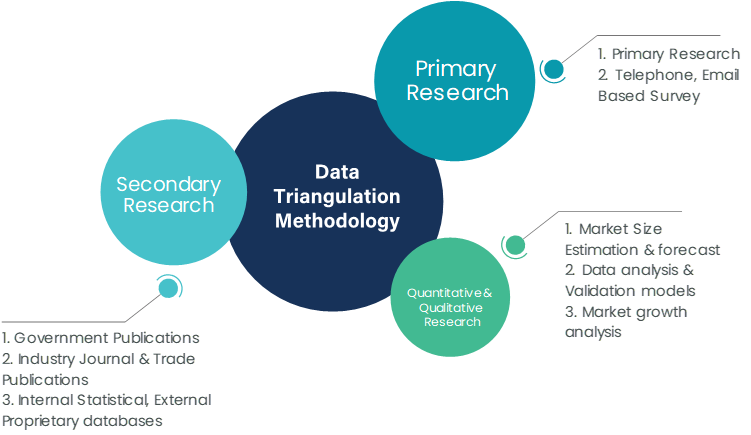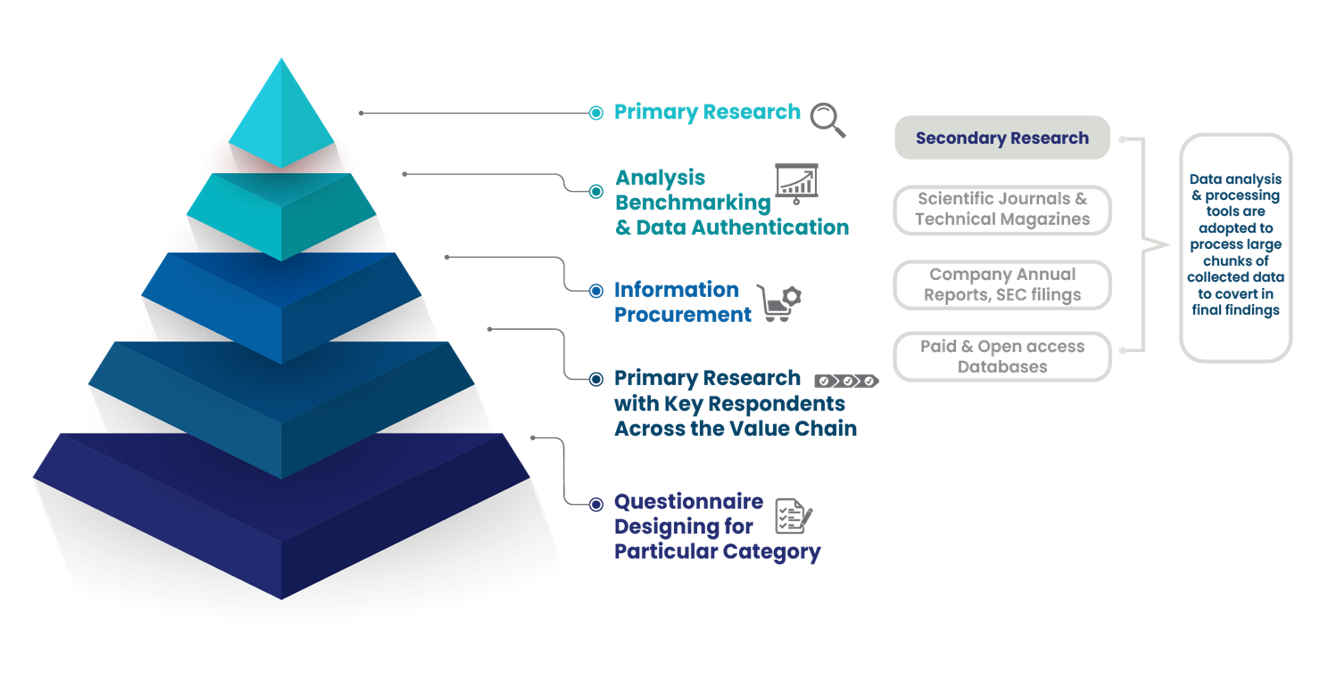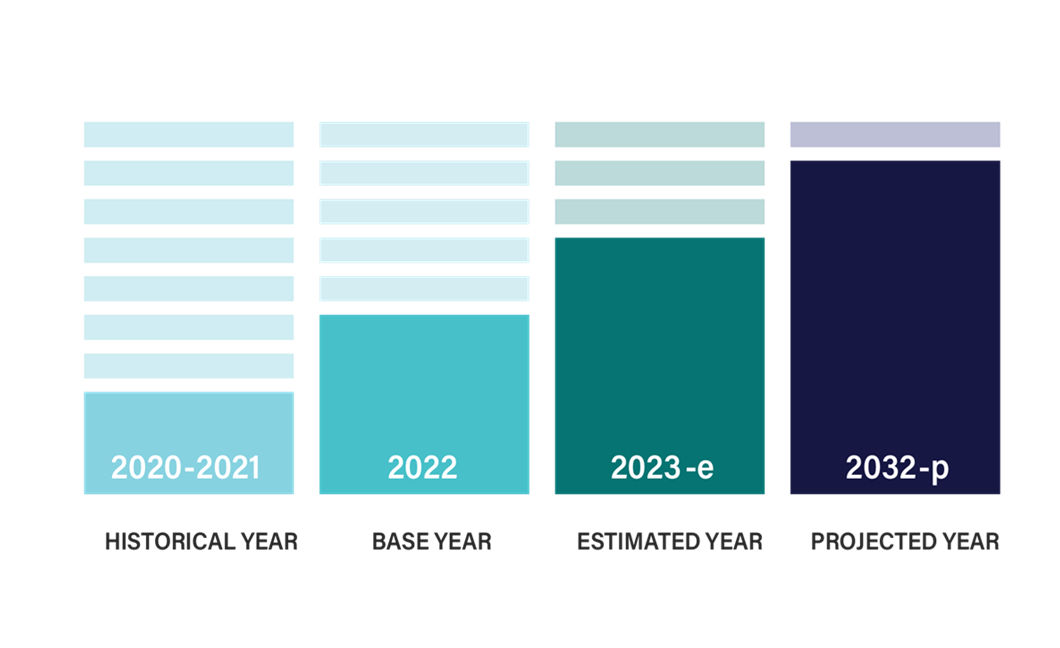

The perimeter security market is a rapidly growing sector within the broader security and surveillance industry. With increasing threats to physical assets and growing concerns around public safety, businesses and governments are investing heavily in robust perimeter security solutions. The market encompasses a wide range of products and services designed to detect, prevent, and manage unauthorized access to physical locations. These include advanced technologies like surveillance cameras, sensors, alarms, access control systems, and barriers. This report, prepared by International Market Research (IMR), projects the trends and growth of the perimeter security market from 2024 to 2031, offering valuable insights into the key drivers, restraints, and opportunities within the industry.
Market Overview (2024-2031)
In 2023, the global perimeter security market was valued at approximately USD 25.5 billion. According to IMR's analysis, the market is expected to grow at a compound annual growth rate (CAGR) of 9.2% from 2024 to 2031, reaching an estimated value of USD 50.3 billion by the end of the forecast period. The increasing demand for perimeter security is driven by rising concerns over public and private sector infrastructure, the protection of sensitive areas, and the growing use of smart technologies for security management.
Key Drivers
1. Rising Security Threats: The increase in global terrorism, unauthorized access, and criminal activities has forced governments, businesses, and private individuals to adopt advanced perimeter security systems. High-profile attacks on critical infrastructure, such as airports, power plants, and government buildings, have heightened the demand for these solutions.
2. Technological Advancements: The perimeter security market is experiencing significant technological advancements. These include AI-powered video surveillance, thermal imaging, motion detection, biometric authentication, and unmanned aerial vehicles (UAVs) for aerial surveillance. AI-driven perimeter security systems can process large datasets, improving threat detection and response times.
3. Government Regulations and Standards: The implementation of stringent regulations and guidelines related to security and safety across various sectors has been a crucial factor driving market growth. For example, governments in regions like North America and Europe have mandated the use of advanced perimeter security systems for critical infrastructure such as airports, energy plants, and military installations.
4. Growth in Infrastructure Development: Increased investment in commercial, industrial, and residential infrastructure worldwide is expected to fuel the demand for perimeter security solutions. Urbanization and smart city projects in emerging economies such as China, India, and Brazil are projected to create substantial growth opportunities in the market.
Market Segmentation
The perimeter security market can be segmented based on components, industry verticals, and regions.
1. By Component
-System (Hardware): The hardware segment includes surveillance cameras, alarm systems, sensors, access control, and barriers. In 2023, hardware solutions accounted for 67% of the total market share. With the growing integration of AI and IoT technologies, this segment is expected to grow at a CAGR of 8.6% during the forecast period.
-Software: Software solutions for perimeter security include video analytics, incident management, and surveillance system integrations. The software segment is projected to witness a higher growth rate (10.1% CAGR) as businesses increasingly turn to cloud-based solutions and AI-powered applications for enhanced security measures.
-Services: The services segment, which includes installation, maintenance, and consultation services, is expected to grow steadily, with a CAGR of 7.9%.
2. By Industry Vertical
- Commercial: The commercial sector has seen strong adoption of perimeter security solutions, especially within data centers, warehouses, and retail complexes. The segment is expected to grow at a CAGR of 8.8% from 2024 to 2031.
- Government & Defense: Government and defense organizations continue to be major consumers of perimeter security solutions, driven by concerns over border security and critical infrastructure protection. This segment is estimated to grow at a CAGR of 10.2%.
- Industrial: Industries such as energy and utilities, oil & gas, and manufacturing are implementing advanced security solutions to protect their facilities from intrusions. The industrial sector is forecasted to grow at a CAGR of 8.4%.
- Residential: With an increasing focus on personal safety and home automation, the residential segment is expected to see moderate growth, with a projected CAGR of 7.1% over the forecast period.
3. By Region
- North America: The North American region accounted for the largest share of the perimeter security market in 2023, with an estimated value of USD 9.7 billion. The region's market is projected to grow at a CAGR of 8.5%, driven by rising investments in critical infrastructure protection and the widespread adoption of advanced security technologies.
- Europe: Europe is the second-largest market for perimeter security, driven by government initiatives to protect critical infrastructure and the presence of major security solution providers. The market in Europe is forecasted to grow at a CAGR of 8.8%.
- Asia-Pacific: The Asia-Pacific region is expected to witness the fastest growth in the perimeter security market, with a CAGR of 10.5%. Countries like China, India, Japan, and South Korea are investing heavily in infrastructure development, and smart city initiatives are boosting the adoption of advanced perimeter security systems.
- Latin America and Middle East & Africa: These regions are expected to experience steady growth in the perimeter security market due to increasing investments in security for industrial and commercial facilities. The market is projected to grow at a CAGR of 7.4% during the forecast period.
Competitive Landscape
The perimeter security market is highly competitive, with several global and regional players competing to offer a wide range of security solutions. Key market participants include Hikvision, Axis Communications, Bosch Security Systems, Honeywell International Inc., and Dahua Technology. These companies are focusing on product innovation, mergers, and acquisitions to strengthen their market position.
In 2023, Hikvision held a market share of 18.5%, making it one of the largest players in the global perimeter security market. Bosch Security Systems and Honeywell International followed with respective shares of 14.2% and 12.7%. These companies have been investing in research and development to introduce AI-driven and cloud-based security solutions that can provide real-time monitoring and threat detection capabilities.
Key Player
Here’s a list of key players in the perimeter security market:
1. Hikvision
2. Axis Communications
3. Bosch Security Systems
4. Honeywell International Inc.
5. Dahua Technology
6. Johnson Controls
7. Senstar Corporation
8. FLIR Systems
9. Tyco International
10. Anixter International
11. Avigilon (Motorola Solutions)
12. Perimeter Security Solutions
13. PureTech Systems
14. RBtec Perimeter Security Systems
15. Southwest Microwave
Future Outlook
The perimeter security market is expected to witness robust growth over the next decade, driven by a combination of technological advancements, increased infrastructure development, and growing concerns over public and private sector security. The integration of AI, machine learning, and IoT in perimeter security systems will revolutionize the market, enabling more efficient monitoring, real-time data analysis, and faster response to security threats.
Furthermore, the trend toward smart cities and automated buildings will offer significant growth opportunities for security solution providers. Governments and businesses will continue to invest in perimeter security solutions to safeguard critical infrastructure, data centers, and public spaces, further boosting the market.
By 2031, the perimeter security market is expected to reach USD 50.3 billion, positioning itself as one of the key pillars of the global security industry. The increasing adoption of cloud-based services, enhanced video analytics, and drone surveillance will ensure that the perimeter security market remains at the forefront of technological advancements in the security sector.
Conclusion
The perimeter security market is poised for significant growth during the 2024–2031 forecast period, driven by rising security threats, technological innovations, and government regulations. As businesses and governments continue to prioritize physical security, the demand for advanced perimeter security solutions will only grow stronger. With a forecasted CAGR of 9.2%, the market represents a lucrative opportunity for businesses operating in the security and surveillance industry. IMR remains committed to providing accurate and insightful market research to help businesses navigate the evolving landscape of perimeter security.
International Market Research follows a comprehensive research methodology dedicated to offering the most accurate market estimation and analysis. It leverages a data triangulation methodology to estimate the market dynamics and deliver precise estimations. The company exploits a combination of top-down and bottom-up approaches for classifying and assessing quantitative aspects of the market.

This research study is based on exhaustive quantitative and qualitative analysis.
The Quantitative analysis involves numerous models, mathematical tools, projection, and sampling techniques. It encompasses the following steps:
Recognize market variables and derive market size.
Valuation of prospects, opportunities, and market penetration rates by analyzing Application Predictive Maintenance Solutionzation, regional trends, etc.
Gauge historical market trends and derive present and future year-on-year growth trends
The qualitative analysis covers briefing about market dynamics and business opportunities and strategies. Lastly, all the research findings are authenticated over interviews with in-house industry experts, freelance consultants, and key opinion leaders, etc.


The preliminary raw data and relevant information are acquired via different sources such as secondary findings, trade surveys, and in-house repositories. Technical issues and trends are attained from technical symposia, surveys, and trade journals. Market dynamics such as driving factors, restraints/challenges, pricing trends, and opportunities are also collected using extensive secondary research via paid and open access data sources.
This info is then filtered to make sure that the related data including market trends, industry dynamics, and outlook is retained for the further research End-user. Data is constantly filtered to confirm that only authenticated sources are measured.
It comprises analysis & mapping of all the data gathered from the above step. It also includes the analysis of data differences observed across numerous data sources and arrives at final data points to be used for final calculations.
This step involves data End-user using various models, mathematical tools, projection, and sampling techniques to derive market findings. It also involves the placement of data points at suitable market spaces to gather viable conclusions.
Market estimates and forecasts are derived via simulation models. Collected data for market dynamics, Propulsion Type sets, pricing trends, and Type development is fed into the model and evaluated simultaneously. These factors are studied on a comparative basis, and their influence over the prediction period is quantified by means of regression, correlation, and time-series exploration. Analyst viewpoint & subject matter expert-based heuristic form of market sizing also plays an essential part in this step.
Some of the parameters measured as a part of the statistical model are:
Macro-economic indicators
Micro-economic indicators
Socio-political indicators
Environmental indicators
Propulsion Type indicators
Validation End-user aids to finalize data points to be used for final calculations. Primary Interviews are conducted to authenticate the data and analysis.
Primary research includes questionnaire-based research, email interactions, online surveys, and telephonic interviews. Interviewees are approached by prominent companies across the value chain including suppliers, Propulsion Type providers, domain experts, and buyers to ensure a holistic and unbiased picture of the market.
Industry participants involved in this research study include:
CEOs, VPs, market intelligence managers
Procuring and national sales managers technical personnel, distributors, and resellers
Research analysts and key opinion leaders from various domains
Our research methodology includes an ideal combination of primary and secondary initiatives.

Source: International Market Research Analysis, 2024
It involves company databases such as Hoover's: This assists us to recognize financial information, the structure of the market participants, and the industry competitive landscape.
The secondary research sources referred to in the End-user are as follows:
Supply Chain and Inventory Managemental bodies, and organizations creating economic policies
National and international social welfare institutions
Company websites, financial reports and SEC filings, broker and investor reports
Related patent and regulatory databases
Statistical databases and market reports
Corporate Presentations, news, press release, and specification sheet of Manufacturers
Open access and paid data sources:
Eurostat
Statista
OneSource
Plastemart
WHO and World Bank
ITU
Factiva
Hoovers
Primary research includes online surveys and telephonic interviews.
Means of primary research: Email interactions, telephonic discussions, and questionnaire-based research, etc.
To validate our research findings and analysis, we conduct primary interviews of key industry participants. Insights from primary respondents help in validating the secondary research findings. It also develops Research Team’s expertise and market understanding.
Industry participants involved in this research study include:
CEOs, VPs, market intelligence managers
Procuring and national sales managers technical personnel, distributors, and resellers
Research analysts and key opinion leaders from various domains
We employ of following parameters in the absence of concrete data sources:
We assign weights to various parameters and quantify their market influence with the help of weighted average analysis, to derive an expected market growth rate
Income distribution, purchasing pattern, per capita income, and other end-user associated parameters
GDP, inflation rate, per capita disposable income, etc.
Expenditure, financial policies of the country, infrastructure and sector growth, and facilities

Source: International Market Research Analysis, 2024
International Market Research(IMR) is global leader in Market Research & Consulting services.